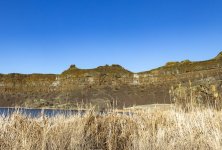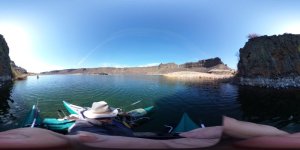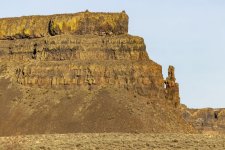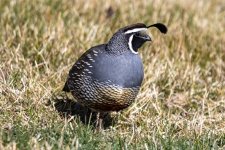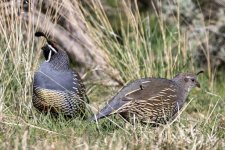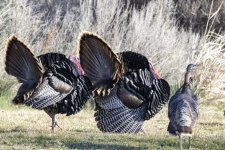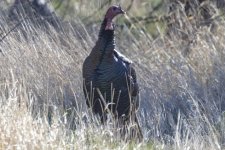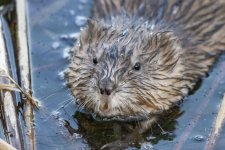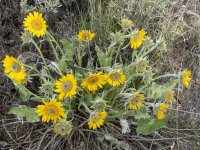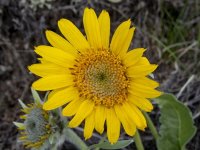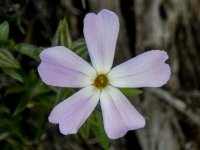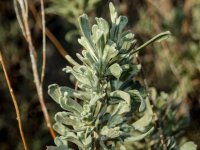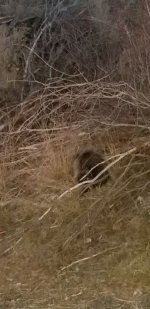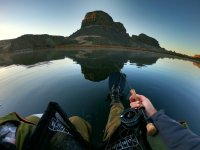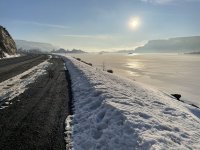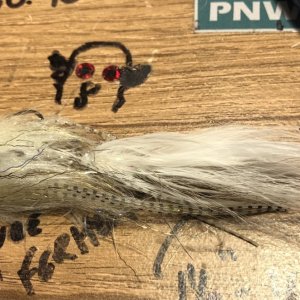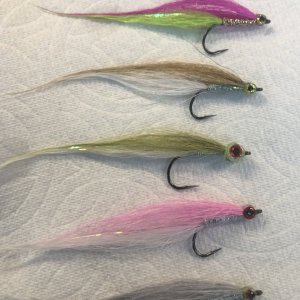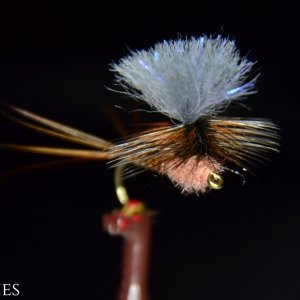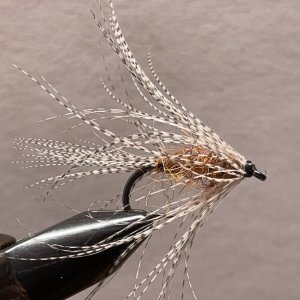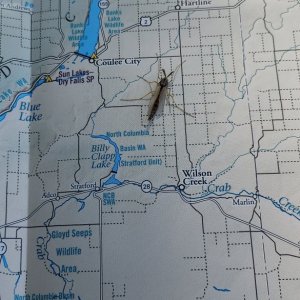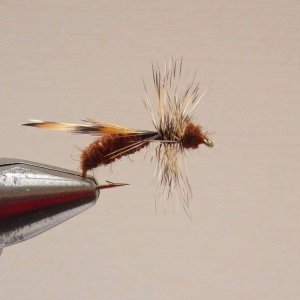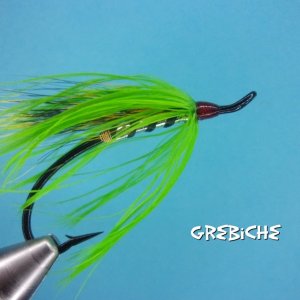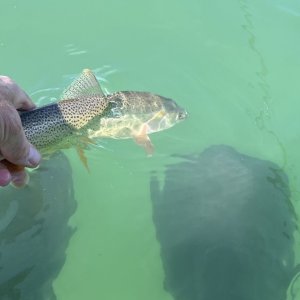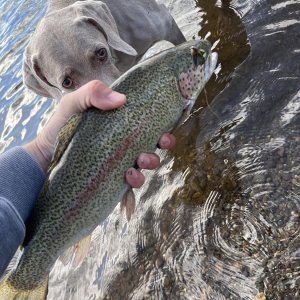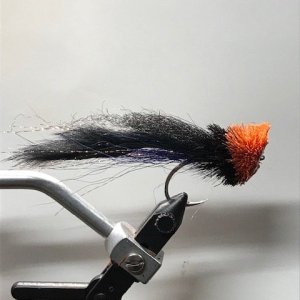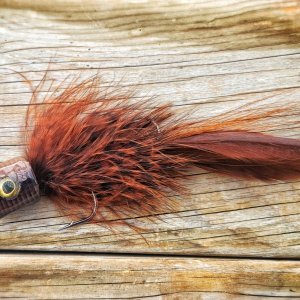This is an older trip report that never made it the other site (too busy by the time that I finished it). So, you can either view it as a continuity contribution to this subforum or as a fore-taste of opportunities that are right around the corner. Let’s call this “Arid Cataract Lake”. It is one of my favorite places to fish and it is great to fish it with a good friend. The scenery is spectacular and unique. And I often catch the largest trout of my year on this, my first significant fishing adventure of the year. While I have occasionally caught fish on dry fly here, I typically fish midge (chironomid) fly patterns under a float; over the years, I’ve gotten better at this approach. And last year, I was preparing to head here for spring break when the COVID-19 travel ban blocked my access. So, with travel freer this year, I was excited to fish here again.
Okay, the geology of the place is cool,
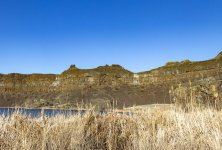
but I’m here to fish. This can be a quirky lake early in the season. The fish might be hugging the bottom in 20-30’ of water or they can come up onto the shallow flats to feed on hatching midges. Based on my experience on previous visits, I had an idea of where to fish and which flies to use. And that was what happened. I caught 5 – 8 fish in the 14 – 24” range each day. These fish fought hard and made multiple runs. But in the end, they were swept up into my net to have the fly removed, perhaps a commemorative picture or two, and then revived to go back about their business. As expected, they were happy to grab size 18 midge fly or a size 14 snowcone fly (also a midge imitation).
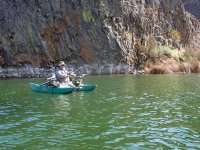
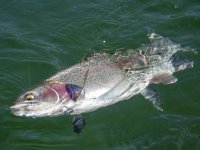
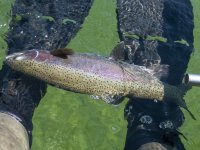
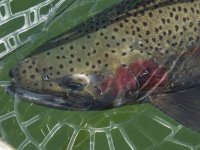
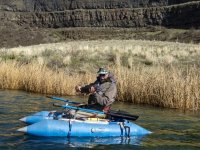
Now, “Arid Cataract Lake” is a great place for wildlife, especially birds. Peregrine and prairie falcons use the cliffs as perches between attacks on the waterfowl of the lake. Family groups of ravens call out. The haunting song of canyon wrens echo in the basin. Goldeneyes, coots, and ring-necked ducks dive in the lake itself. And red-winged blackbirds call and chase each other along the shore. [When it warms up a bit more, painted turtles bask along the margins of the lake.]
On the second day, I was happy with seven nice fish. My friend had a slower day and wanted to fish a bit longer. So while he was still fishing, I explored the hillsides for more spring flowers. I was rewarded with Jeffries shooting stars, sagebrush buttercups, and prairie star flower.
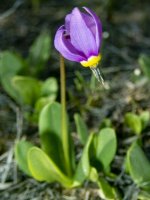
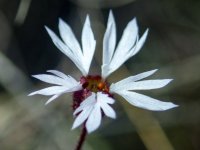
Steve
Okay, the geology of the place is cool,

but I’m here to fish. This can be a quirky lake early in the season. The fish might be hugging the bottom in 20-30’ of water or they can come up onto the shallow flats to feed on hatching midges. Based on my experience on previous visits, I had an idea of where to fish and which flies to use. And that was what happened. I caught 5 – 8 fish in the 14 – 24” range each day. These fish fought hard and made multiple runs. But in the end, they were swept up into my net to have the fly removed, perhaps a commemorative picture or two, and then revived to go back about their business. As expected, they were happy to grab size 18 midge fly or a size 14 snowcone fly (also a midge imitation).





Now, “Arid Cataract Lake” is a great place for wildlife, especially birds. Peregrine and prairie falcons use the cliffs as perches between attacks on the waterfowl of the lake. Family groups of ravens call out. The haunting song of canyon wrens echo in the basin. Goldeneyes, coots, and ring-necked ducks dive in the lake itself. And red-winged blackbirds call and chase each other along the shore. [When it warms up a bit more, painted turtles bask along the margins of the lake.]
On the second day, I was happy with seven nice fish. My friend had a slower day and wanted to fish a bit longer. So while he was still fishing, I explored the hillsides for more spring flowers. I was rewarded with Jeffries shooting stars, sagebrush buttercups, and prairie star flower.


Steve

